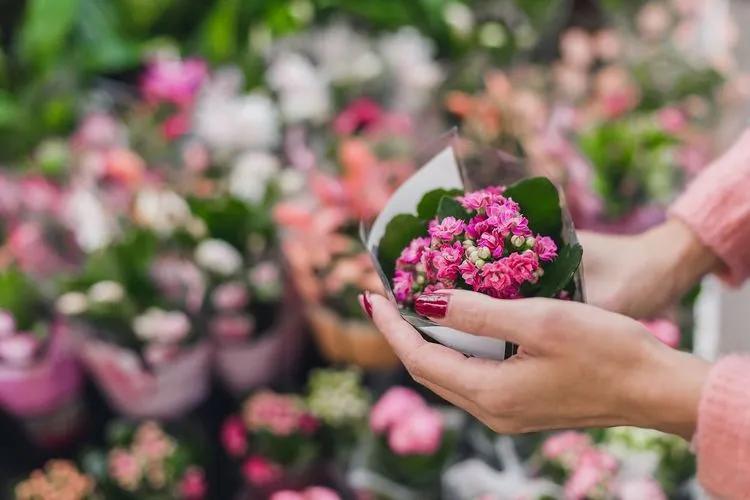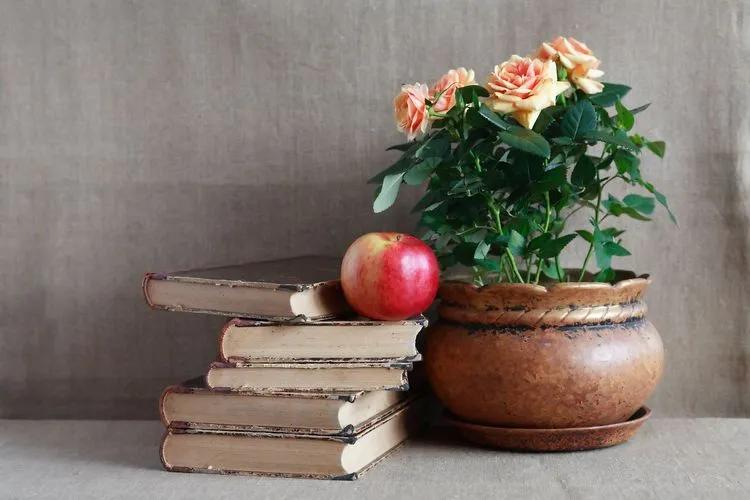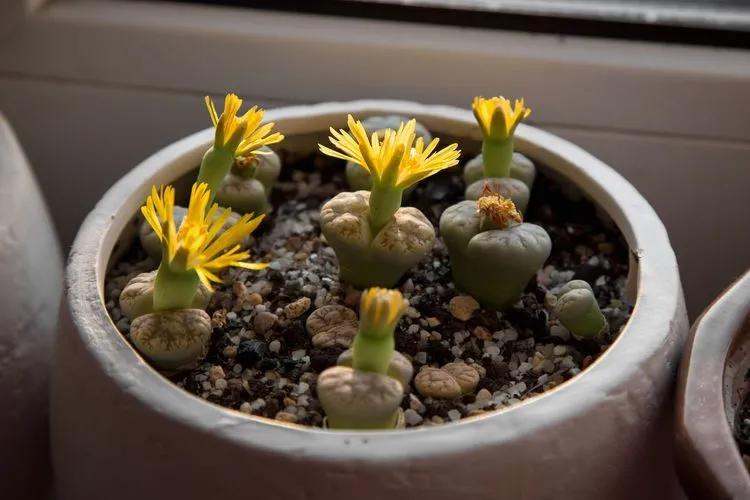Green pets not only decorate our home but also fill us with positive emotions, moisturize and cleanse. It is not surprising that plant collections of some enthusiasts reach impressive sizes, and only a limited area stops lovers of indoor flora from looking for new rare specimens. So what to do if you do not have much space for a plant? We have prepared a list of pretty tiny flowers to grow at home.
Flowering miniature plants
Some of these flowers are made tiny by nature itself; others are the result of skillful selection. Beautifully flowering mini-copies, as a rule, appear artificially, which, however, does not detract from their value.
Mini Violets
 Mini-violets are so-called varieties of dwarf saintpaulias. Although the common violet itself is small, the miniatures of this wonderful plant are even tinier. There are several varieties of tiny violets: micro (diameter of the leaf rosette is about 6 cm), mini (diameter - 15 cm), and midi (diameter up to 20 cm). Despite the modest size of the bush, the flowers of the mini-varieties are impressive in size and are painted in a variety of shades. The forms of flowers are unusually diverse: double, simple, star-shaped, bell-shaped, etc.
Mini-violets are so-called varieties of dwarf saintpaulias. Although the common violet itself is small, the miniatures of this wonderful plant are even tinier. There are several varieties of tiny violets: micro (diameter of the leaf rosette is about 6 cm), mini (diameter - 15 cm), and midi (diameter up to 20 cm). Despite the modest size of the bush, the flowers of the mini-varieties are impressive in size and are painted in a variety of shades. The forms of flowers are unusually diverse: double, simple, star-shaped, bell-shaped, etc.
In terms of care, keeping mini-violets at home is no more difficult than other types of violets, but much less space is needed for them.
Mini Kalanchoe
 Despite its exquisite appearance, this flowering plant is not very common. Compared to an ordinary house plant, which is about 25 cm high, the dwarf Kalanchoe does not grow higher than 15 cm. Compact flower varieties have several names - "Mini Mix,” "Kalandiva mini," and various colors of buds - red, pink, white, cream. Like other varieties of Kalanchoe, Kalandiva mini does not require complicated care. It is enough just to water, fertilize, prune and replant the plant on time.
Despite its exquisite appearance, this flowering plant is not very common. Compared to an ordinary house plant, which is about 25 cm high, the dwarf Kalanchoe does not grow higher than 15 cm. Compact flower varieties have several names - "Mini Mix,” "Kalandiva mini," and various colors of buds - red, pink, white, cream. Like other varieties of Kalanchoe, Kalandiva mini does not require complicated care. It is enough just to water, fertilize, prune and replant the plant on time.
Mini Gloxinia
 This is the common name for several varieties of flowering representatives of the Gesneriaceae family. Strictly speaking, these plants are not gloxinia but sinningia, but this name is found in everyday life. Dwarf varieties possess unusually poetic names - “Cote d'Azur,” “Young Lady,” “Rose of Argentina,” “Pure Soul,” “Little Prince,” “Bell Ringing,” and others. All of them are distinguished by extraordinary bright or pastel shades. All these varieties of mini-gloxinia have only one thing in common - the height of these wonderful indoor plants does not exceed 20 cm.
This is the common name for several varieties of flowering representatives of the Gesneriaceae family. Strictly speaking, these plants are not gloxinia but sinningia, but this name is found in everyday life. Dwarf varieties possess unusually poetic names - “Cote d'Azur,” “Young Lady,” “Rose of Argentina,” “Pure Soul,” “Little Prince,” “Bell Ringing,” and others. All of them are distinguished by extraordinary bright or pastel shades. All these varieties of mini-gloxinia have only one thing in common - the height of these wonderful indoor plants does not exceed 20 cm.
Mini Roses
 Mini roses can be found in stores quite often and are in unprecedented demand among customers. This is not surprising: the beauty of the flower is mesmerizing, and the compact size of the plant allows you to grow it even in a small pot. However, before buying such a rose, consider if you can care for it. Indoor roses, including dwarf ones, are unusually capricious and top the most wayward green favorites list. Mostly, they are sold with pretty flowers; however, it is challenging to make the plant bloom again at home.
Mini roses can be found in stores quite often and are in unprecedented demand among customers. This is not surprising: the beauty of the flower is mesmerizing, and the compact size of the plant allows you to grow it even in a small pot. However, before buying such a rose, consider if you can care for it. Indoor roses, including dwarf ones, are unusually capricious and top the most wayward green favorites list. Mostly, they are sold with pretty flowers; however, it is challenging to make the plant bloom again at home.
It is believed that all varieties of miniature roses originated from the Chinese rose "Minima" brought to the Old World. A little later, the varieties “Pompon de Paris” and “Rouletii” were developed in Europe. After a while, when the passion for mini roses became widespread, breeders delighted flower growers with countless new varieties.
Miniature succulents and cacti
There are numerous tiny succulents both in nature and grown at homes. These species, growing in difficult conditions of arid deserts, have adapted not to waste resources. Some store water in their leaves, others, like cacti - in thick trunks. But still, many of them are so small that they need very little moisture.
Lithops or living stones
 Stems of Lithops or living stones consist of thick, fleshy leaves, divided in two. A divine flower emerges from the center: depending on the variety, it can be white, red, yellow, or bright pink. Lithops are unusually exotic and resemble round multi-colored pebbles. Some of them look like sea animals or corals.
Stems of Lithops or living stones consist of thick, fleshy leaves, divided in two. A divine flower emerges from the center: depending on the variety, it can be white, red, yellow, or bright pink. Lithops are unusually exotic and resemble round multi-colored pebbles. Some of them look like sea animals or corals.
Like other representatives of the desert flora, lithops are very unpretentious: they do not need frequent watering and feeding. They are able to survive even in poor soil under the open sun. In addition, living stones are very miniature - no more than 5 cm in height and diameter. Lithops suit pot compositions perfectly: mix them with decorative rubble, shell rocks, and other succulents.
Gibbaeum
 Gibbaeum is very similar to lithops. Both these plant species belong to the same family of Aizoaceae. The appearance of gibbaeum is exceptional: thick, fleshy leaves, falling into two parts, form dense thickets on the soil surface. Exotic flowers are a bit like chrysanthemum and are painted in various shades: pale pink, cream, lilac, orange. Because of the unusual appearance, the succulent received several nicknames: "baby's bottom,” "parrot's beak," and "ostrich paws.” The secrets of gibbaeum care are simple: minimal watering, poor soil, as much sun as possible.
Gibbaeum is very similar to lithops. Both these plant species belong to the same family of Aizoaceae. The appearance of gibbaeum is exceptional: thick, fleshy leaves, falling into two parts, form dense thickets on the soil surface. Exotic flowers are a bit like chrysanthemum and are painted in various shades: pale pink, cream, lilac, orange. Because of the unusual appearance, the succulent received several nicknames: "baby's bottom,” "parrot's beak," and "ostrich paws.” The secrets of gibbaeum care are simple: minimal watering, poor soil, as much sun as possible.
